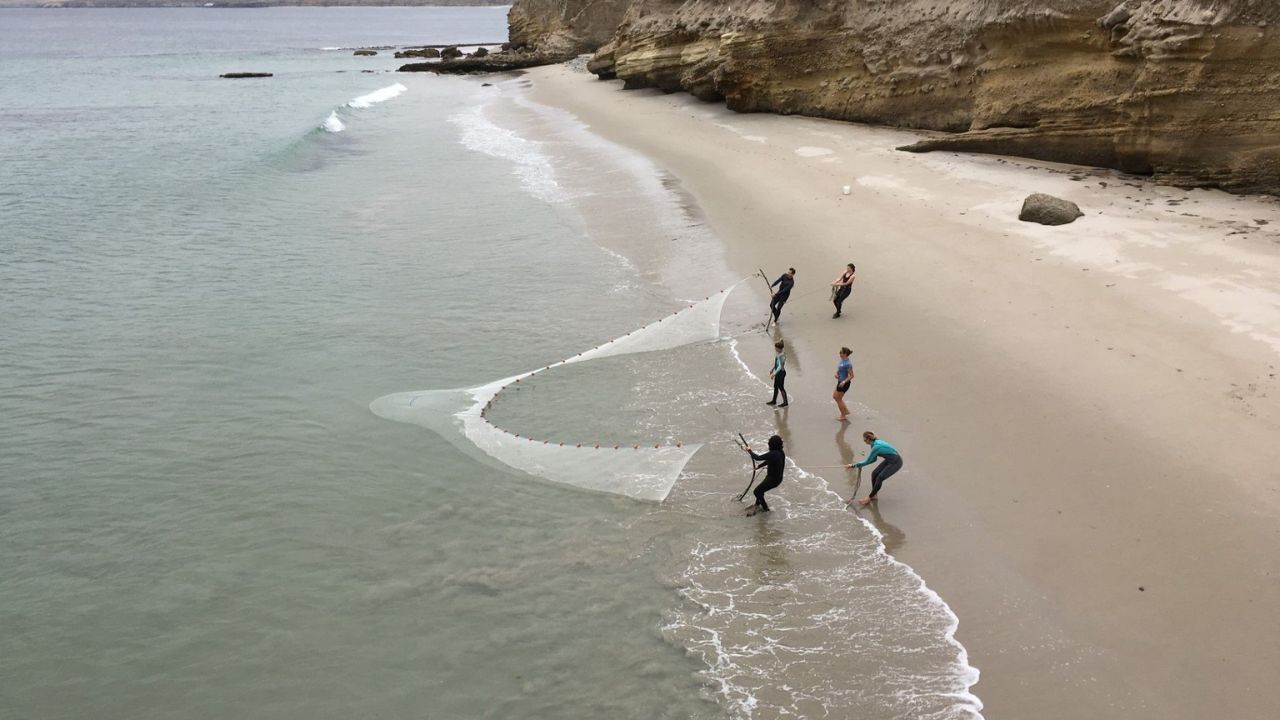Thanks to environmental DNA, or eDNA, scientists now have the most comprehensive answer to that question. A study led by UCLA and published in the journal PLOS One has identified 80 species of fish and rays living in the surf zones of southern California, where ocean waves crash onto the beach.
According to Paul Barber, a professor of ecology and evolutionary biology at UCLA and the senior author of the paper, “Environmental DNA opens up a wealth of possibilities to monitor our local beach ecosystems.”
The researchers collected samples of ocean water from 18 sites spanning from the Channel Islands to Catalina. They extracted DNA from the water, which animals shed in the form of dead skin, scales, and other body parts. This DNA was then matched to species using genetic libraries.
The study revealed a diverse range of fish, sharks, and rays, including leopard sharks, school sharks, bat rays, round stingrays, opaleye, northern anchovies, flatfish, giant kelpfish, and surfperch.
Zack Gold, the study’s lead author, conducted the research as a doctoral candidate at UCLA and is now a marine scientist at the Pacific Marine Environmental Lab Ocean Molecular Ecology group of the National Oceanic and Atmospheric Association. Gold highlighted one positive finding: white seabass DNA samples consistently appeared at all the test sites.
This is significant because white seabass, which has been historically overfished, was the focus of a 1995 California conservation plan. While earlier studies indicated a slow recovery for the species, the new study provides evidence of a more robust comeback than previously thought.
The researchers compared eDNA to two traditional methods, beach seines (nets used to capture species) and baited video cameras, to survey ocean life. They found that eDNA revealed a more comprehensive picture of the species living in the surf zones studied, detecting 58 species that the other methods missed.
However, the other research methods still have scientific value. For instance, eDNA does not provide information about the size, age, and sex of the animals. Additionally, eDNA data is limited in quantifying the abundance of each species in a given area. Recent advancements in technology may improve this aspect.
Surf zones, which serve as ecological boundaries between land and ocean, are challenging to study due to their turbulent and ever-changing nature, as noted by UC Santa Barbara marine ecologist Jenifer Dugan, a co-author of the paper. She emphasized that little is known about the fish communities in surf zones, and the study relied on scientists using beach seines and baited cameras to gather information.
While genetic labs are required to process eDNA samples, even non-scientists such as lifeguards and beachgoers can collect water samples, making the process more affordable, accessible, and frequent. This provides conservation science with an opportunity to better understand how marine life is affected by events such as oil spills, pollution, extreme temperatures, and other short-term environmental concerns.
McKenzie Koch, a lead author of the paper who teaches science to children at Ocean Institute, a nonprofit education organization, believes that involving citizen scientists in research increases their awareness and care for wildlife. She said, “If we continue to connect recreation to science, we’ll end up with a more motivated generation.”
Barber suggested that environmental nonprofits like Heal the Bay, which regularly test water samples from the region’s beaches for bacteria, could also utilize those samples for long-term monitoring of marine life. This would be especially informative as the oceans warm due to climate change.
Apart from these benefits, the study provides the clearest understanding to date of the marine life near popular beach destinations like Malibu and Santa Monica. For example, evidence of leopard sharks and school sharks was found in these areas.
However, Gold assured beachgoers that there is no need to avoid these beaches as humans are not the prey of these sharks. He humorously added, “SUVs on the 405 are a much bigger threat than sharks.”
Nonetheless, it is helpful to be aware of the presence of round rays, which can sting when disturbed. Gold shared from personal experience that shuffling one’s feet along the sand can help avoid painful injuries.
